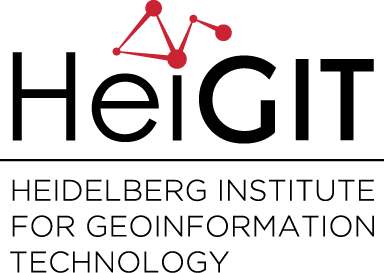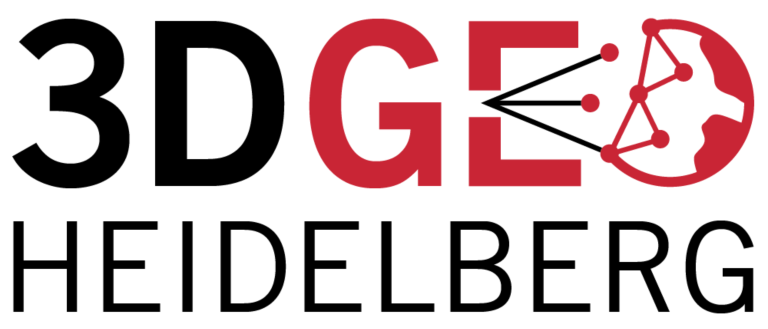Category: Publications
-
Zusammen Wirken / Working Together: TdLab Geography
In der aktuellen Ausgabe des Forschungsmagazins „Ruperto Carola“ haben Dr. Nicole Aeschbach und Dr. Kathrin Foshag einen Artikel zur Arbeit des TdLab Geographie am Geographischen Institut der Universität Heidelberg veröffentlicht. Unter dem Titel „Zusammen Wirken. Die große Transformation“ zeigen die Leiterin und die Postdoktorandin des TdLab auf, wie transdisziplinäre (td) Ansätze einen Beitrag zur wissenschaftlichen…
-
4D objects-by-change: Spatiotemporal segmentation of geomorphic surface change from LiDAR time series
How can surface change processes be detected and delineated in large time series of 3D point clouds? A paper on the extraction of 4D objects-by-change has just been published in the ISPRS Journal of Photogrammetry and Remote Sensing. It presents an automatic method for 4D change analysis that includes the temporal domain by using the…
-
2nd Call for Papers: special issue of Transactions in GIS on “Geographical and Cultural Aspects of Geo-Information – Issues and Solutions” (+ workshop proceedings are online)
Last June, colleagues from the GIScience group – Dr. Tessio Novack, Dr. Michael Schultz and Prof. Dr. Alexander Zipf – together with Dr. Peter Mooney (Maynooth University, Ireland) and Dr. Yair Grinberger (The Hebrew University in Jerusalem, Israel) have organized a workshop on “The Geographical and Cultural Aspects of Geo-Information: Issues and Solutions (GeoCultGIS)” as…
-
5 Years Missing Maps- Achievements and future work and how to visualize the Missing Maps impact using ohsome
Happy Birthday Missing Maps! On the occasion of the recently launched Missing Maps 5 Years Birthday Blog, that also highlighted our latest Missing Maps related HeiGIT and ohsome projects, we put together an overview of our years with and within the Missing Maps. November 2014 the Missing Maps project was launched by the British and…
-
TdLab Geographie im Klimawandel-Diskurs
An der Schnittstelle von Wissenschaft und Gesellschaft positioniert sich das TdLab Geographie in dieser Woche mit zwei Aktivitäten. Am 25.11.2019 präsentierte Dr. Nicole Aeschbach gemeinsam mit Prof. Dr. Werner Aeschbach (Institut für Umweltphysik, Universität Heidelberg) im Rahmen eines sehr gut besuchten Vortrags bei der von Students for Future und Fridays for Future Heidelberg organisierten „Public…
-
SYSSIFOSS project @ 2nd symposium on satellite-based earth observation in Cologne
On November 12-13, Jannika Schäfer from KIT presented the SYSSIFOSS project at the 2nd symposium on satellite-based earth obersvation (2. Symposium zur angewandten Satellitenerdbeoachtung) in Cologne. SYSSIFOSS is a joint project between the Institute of Geography and Geoecology (IFGG) of the Karlsruhe Institute of Technology (KIT) and the 3DGeo Research Group of Heidelberg University. In…
-
The Importance of Monitoring Interval for Rockfall Magnitude‐Frequency Estimation
Rockfalls commonly exhibit power law volume-frequency distributions, where fewer large events are observed relative to more numerous small events. Within most inventories, the smallest rockfalls are the most difficult to detect and so may not be adequately represented. A primary challenge occurs when neighboring events within a single monitoring interval are recorded as one, producing…
-
PermaSAR project concluded with publication of final report
With the publication of the final report, the PermaSAR project is concluded. In the blink of an eye regarding timescales of permafrost monitoring, research within the project period covered diverse methods and analyses around the topic of permafrost and related thaw subsidence in Arctic tundra landscapes. The report (in German) provides all details on the…
-
Studying the impact of built environments on human mental health in everyday life – a review of methods published
Rapid worldwide urbanization benefits humans in many aspects, but the prevalence of common psychiatric disorders is increased in urban populations. While the impact of city living and urban upbringing on mental health is well established, it remains elusive which of the multiple factors of urban living convey risk and resilience for mental disorders. For example,…
-
Studying the impact of built environments on human mental health in everyday life – a review of methods
Rapid worldwide urbanization benefits humans in many aspects, but the prevalence of common psychiatric disorders is increased in urban populations. While the impact of city living and urban upbringing on mental health is well established, it remains elusive which of the multiple factors of urban living convey risk and resilience for mental disorders. For example,…
-
Using OSM data to generate scenes for LiDAR simulations in HELIOS
A new tutorial for the 3DGeo‘s LiDAR simulation software HELIOS has been posted to the repository’s wiki page. It shows a simple way to generate scenes of real landscapes including building and vegetation models as well as terrain from NASA JPL’s SRTM data. When applied to OSM data in the city of Vienna, the obtained…
-
Classification of 3D ALS Point Clouds using End-To-End Deep Learning
In a new publication, we show how deep neural networks can be used in an end-to-end manner for the classification of 3D point clouds from airborne laser scan data. The research, based on the award-winning diploma thesis of Lukas Winiwarter at TU Wien, has now been published in “PFG – Photogrammetrie, Fernerkundung, Geoinformation“, the Journal…


